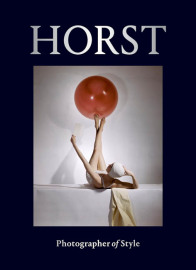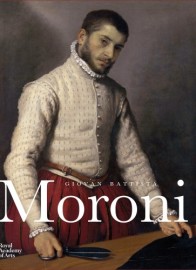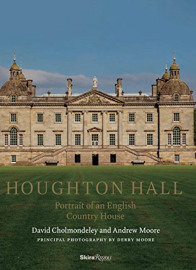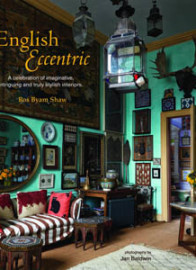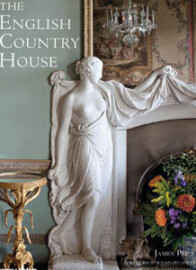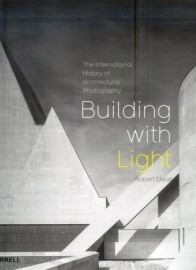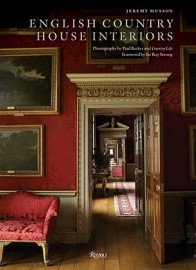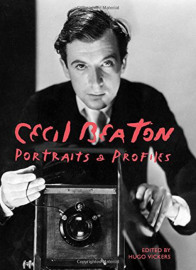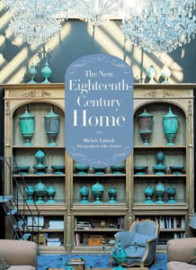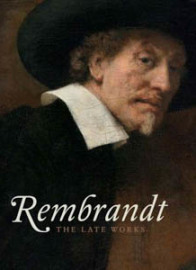Historian Gwendolyn Leick describes how some years ago as the wife of a Turk – the son of an army officer – she happened to visit Ataturk’s striking mausoleum in Ankara. Her emotional response – that included a feeling of reverence – surprised her, and triggered a quest to survey the tombs of other pivotal 20th century leaders around the world, not just from architectural but also historical and anthropological perspectives. Her aim, to explain how and why the architecture of the dead has the ability to exert this kind of extraordinary power over us.
“I began to think” she says “of what sort of messages such self-consciously constructed architecture parlante (architecture that ‘speaks’ to the viewer and makes its purpose clear) was trying to convey and how, with the passing of time, subsequent generations react to such a defined programme.”
Leick’s study reveals the fascinating apotheotic narratives of the political and architectural designers of these tombs as they posthumously sanctify the dead leader. The emerging personality cults, which in some – though not all – cases would have completely appalled the leader concerned – was not without purpose. At times palatial, austere and even ludicrous, tombs were designed in often symbolic locations, in a deliberate effort to legitimise the present and future status quos. Nationhood was thereby rooted in the mausoleum that safeguarded the hallowed bones of newly mythologised ‘founding fathers’. It is oddly ironic that connecting past and present, the architecture of the dead can often become the symbolic living heart of a nation. This may curiously reflect the dual purpose of many mausolea as both tomb of the dead and temple of the living.
Leick was to visit and photograph a remarkable 18 out of the 24 tombs discussed in her book, in energetic busts of peripatetic activity. Moved to tears by some, and indifferent or even repulsed by others, the insights of her scholarly and unexpectedly entertaining travelogue of the morbid are profoundly revealing. Gwendolyn Leick talks to GDC Interiors Journal about her book Tombs of the Great Leaders…
A book is often a response to a particular question or a pursuit of a singular obsession. It could also be conceived as answering a personal need, to satisfy curiosity, especially if the writing involves research.
In the case of my last book, Tombs of the Great Leaders, quite a few different interests, private and professional threads and lines of thought came together and the possibility of them being connected were not clear to me until someone at an academic conference suggested doing a kind of guide book of political mausolea. I had been giving a talk on one particular mausoleum, one that has interested and intrigued me for many years, the grand and rather austere mausoleum complex of Atatürk in Ankara. I had been looking at the phenomenon of the Turkish leader’s continuing relevance in contemporary Turkish culture and politics, given that he had died in 1938.
I had visited the tomb complex several times, and it always brought to mind the distinction made by the Viennese architect Adolf Loos between architecture that serves the living and architecture that serves the dead. In Loos’ view only an architecture devoid of the necessity to fulfil practical and hence banal purposes, could aspire to the status of a work of art. A work of art, for Loos, was one with the power to move, to inspire reverence or at least conducive to an inner stillness.
We assume that the dead require repose or that they may wish their remains to be in a place undisturbed. What to do with a cadaver constitutes a conundrum for the living and its thoughtful disposal is often seen as a distinctly human trait, like the use of fire or the ability to use symbols.
Burial practices reveal something about the beliefs held by particular cultures, their attitudes to life and death, their social structure, even their material culture. Often, we only know something about a long vanished people because of how they buried their dead and what they chose to put into their graves.
Graves and cemeteries do serve the needs of the living as offering a means to remind themselves of what endures: names, dates, social links and distinctions; and clearly some of dead are more equal than others. In the long barrows and megalithic mounds of prehistoric Europe, human remains, together with artefacts, such as weapons or jewellery, were not only kept safe but could be handled, re-arranged, added to or subtracted to reconstitute narratives of who the group was and what bound them to the ancient inhabitants of their kind. I had been struck by the way such very ancient practices continued to be observed when it came to the personal belongings of Atatürk, whose clothes, cars, pen-holders and ash-trays were openly displayed in his mausoleum and reverently gazed at by new generations of Turks; and the choice of site for his tomb, an ancient burial burial site for the Phrygian elite of several thousand years ago, was fortuitous.
As a historian of the Ancient Near East, I was clearly making quite a departure – with this book – from my usual professional preoccupations. In studying the modern processes involved, I was having to think both as an anthropologist – looking at cultural comparisons – and also as an architectural theorist. Furthermore, there was the prospect of adventure, of visiting the places where great leaders had been entombed, and for me to witness how their final resting places had been purposely constructed as sites of national importance. I could see that this was no armchair topic to be researched from a distance. Over two years, in intense bursts of long-distance travel, I undertook the quest to experience these sites.
On these marathon visits, I was open to allowing the setting and architectural configurations to have whatever effect they would; to observe what people who visited such sites did and to try and talk to some of them; to get a feel of what the official take was and to what extent that might differ from how individual visitors thought and behaved. I also used myself as a test case as to the effectiveness of the architectural programme – did it convince, move or delight, or baffle or repel? Of course it was also necessary to understand why the incumbent of such a memorial tomb was honoured in this way; what role he played in the history of the nation; under what circumstances the tomb was built; what it meant to signify and what had happened since to account for the present circumstances.
I set out to visit as many of these places as I could, beginning with the revolutionary leaders: Lenin in Moscow, Mao Zedong in Beijing, Ho Chi Minh in Hanoi and Kim Il Sung in Pyongyang. Stalin could see the value of channeling the people’s grief over Lenin’s death into a veritable personality cult that he soon hijacked for himself. A splendid stone clad mausoleum designed by Alexey Shchusev housed the embalmed body of Comrade Lenin in a glass sarcophagus by Melnikov. The expertise of Russian morticians at keeping the body in a state that resembled an eternal sleep was eventually offered to a number of heads of states allied to Soviet Russia (from Czech president Gottschalk to the Angolan Agostinho Neto). The pattern set by Stalin to derive legitimacy as guardian of a revered leader’s mortal remains, was copied by most other communist regimes. Although the continuing reverence for Lenin in Putin’s Russia is hardly encouraged and no longer features in May Day parades, cult practices at the mausoleum still continues unabated in both North Korea and Vietnam.
With the birth of many new nations following the collapse of colonialism across the world, it was the preceding struggle for national independence that provided narratives of the heroic ‘liberator’, who would lead the nation to a new future full of hope. Following independence, the heroic liberator was then transformed into the ‘Father of the Nation’.
Their mortal remains were deemed too precious – in the collective memory – to allow the humble burial that some of these leaders had wanted for themselves. This was particularly out of the question as subsequent leaders often concentrated their claims to legitimacy on those very remains. Neither Ho Chi Minh nor Mao for example, wanted grand tombs, but were nevertheless magnificently enshrined on a symbolic site, on or very the near the spot where independence had been declared.
The dead bodies of Sun Yat Sen, Ho Chi Minh and Kwame Nkrumah for instance, were moved many times until the propitious time came for them to be laid to rest in their mausolea. Such propitious times may however still be far off for those national leaders who wished to be buried in a particularly meaningful place: Chaing Kai Shek still waits for the re-unification of China and Taiwan to return to his native Fujian, meanwhile his sarcophagus sits in his erstwhile living-room in his rural retreat at Chihu, a national monument nevertheless. Yasser Arafat likewise patiently awaits the day when the Israeli government would countenance his body to be laid to rest within the Muslim sacred precinct in Jerusalem; and I was struck at how skilfully the architect of his temporary tomb conveyed the liminality of his present mausoleum in Ramallah.
In the case of the Ayatollah Khomeini and General Suharto, strong local traditions of honourable forms of burial were appropriated to accommodate tombs, which were meant to become places of pilgrimage as well as sites of often painful memory.
In terms of architectural merit many of the communist mausolea are rather clumsy interpretations of Schusev’s notion of the eternal cube, in their effort to elicit the response that Loos would demand from a solemn burial site. I found the greatest freedom from precedent in the African mausolea. This could produce quite breathtaking post-modernist, symbol-laden monstrosities, but occasionally also buildings of humble and moving dignity.
As I needed to understand why it was that a particular incumbent was given such a mausoleum, and also discover why – or indeed if – it endured, I therefore had to undertake a considerable amount of historical research. This inevitably provided fascinating insights into twentieth century history as it was experienced in Eastern China, Africa and the Middle East – well away from the Eurocentric perspective. I felt it was important to convey this understanding, as it offers clues on how to read the sites and buildings beyond the architectural properties and the official narratives offered by local guides. I also wanted to convey my own experience of these very concentrated but totally unforgettable journeys around the world.
‘Tombs of the Great Leaders’ by Gwendolyn Leick, Published by Reaktion Books
Main image Anitkabir: The Memorial Tomb of Mustafa Kemal Ataturk, Ankara. View of Ceremonial Area with Hall of Honour.
Images are courtesy of Gwendolyn Leick
To order ‘TOMBS OF THE GREAT LEADERS‘ please visit GDC interiors Book Collection on Amazon
























